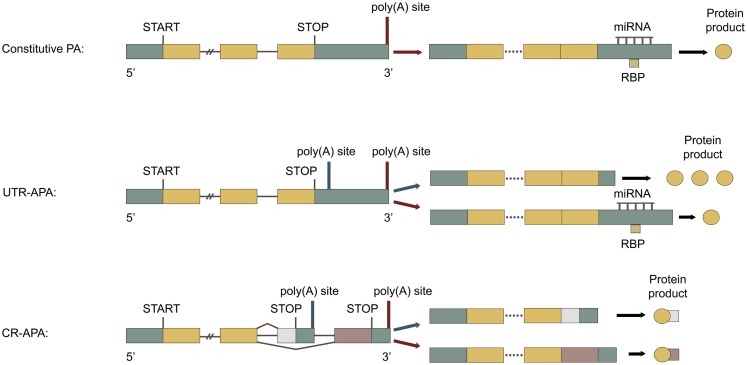Figure 1.
Types of polyadenylation. Green boxes represent untranslated regions (UTRs), yellow boxes represent shared exons, pink, and white boxes represent unshared exons and the connecting horizontal lines represent introns. Adapted from Di Giammartino et al. (2011). Top: constitutive polyadenylation: gene contains only one poly(A) site and can therefore not undergo APA. Middle: untranslated region (UTR)-APA: gene contains multiple poly(A) sites located in the 3′ UTR of the terminal exon. APA results in mRNAs with different lengths of 3′ UTR, producing the same protein. Proximal polyadenylation (blue arrow) leads to 3′ UTR shortening, less post-transcriptional regulation, and enhanced protein translation. Bottom: coding region (CR)-APA: gene contains additional poly(A) sites located in the CR of exons and in introns. APA results in mRNAs with different 3′ UTRs and C-terminal CRs, producing distinct protein isoforms. Proximal polyadenylation (blue arrow) produces a mRNA with a different C-terminal CR and 3′ UTR, producing a C-terminally truncated protein isoform.

